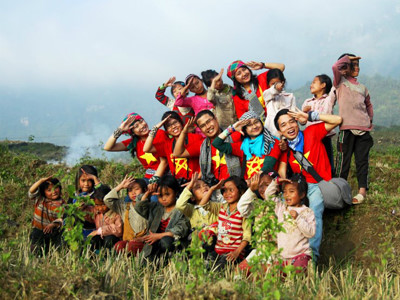
In the past, most customers on domestic tours in Vietnam were overseas visitors with stable income and a passion for social activities.
 |
However, this trend is shifting, with more and more domestic tourists enjoying exploring their own country.
A growing trend for charity or voluntourism is attracting numerous international students from countries such as Australia, the US, Japan, and Singapore, with each tour involving between 20 and 300 students.
According to Tran The Dzung, director in charge of the international market of Fiditour, one of the agencies focusing on promoting the model of voluntourism to pupils and students, said that every year, pupils and students in many countries are involved in numerous curricular activities with high social orientation, making an abundant source of potential tourists and a big opportunity for tourism agencies.
A volunteering tour can include activities like gifting, exchange programmes and visiting local communities combined with exploring local cultures and enjoying landscapes and attractions.
Some tours also partner up with volunteers to enhance awareness of environment protection.
For such tours, the destinations are often in remote areas which are facing economic difficulties but still offer majestic landscapes and interesting local cultures such as Northwestern areas, Northeastern areas or the Central Highlands of Vietnam.
Based on the participants, each charity tour will be organized in a different way. However, all of them have some similar requirements such as limiting the number of participants in order to ensure the quality, or requiring participants to be in a good state of health before accepting them to join a tour.
There is a great deal of time-consuming organisation required for these tours, such as identifying where support is needed and who needs it and gaining permission from local authorities. For some tours, tourism agencies have to travel many times to the destinations in order to get the permit from local authorities.
According to a representative of another tourism agency, charity tours are a growing trend, attracting many participants, but not all agencies are interested in holding such tours.
“The main purpose of such tours is charity, not benefits, while the organisation process takes a lot of time and effort and the destinations are often in remote areas, so they cannot satisfy all the needs of relaxation for tourists. Thus, in Vietnam, charity tours are still in the minority,” he said.
Though not an easy trip for organisers or participants, charity tours are still held every year. For participants, these tour can help them understand some of the difficulties local and remote communities may face. For host communities, promoting local tourism can result in more jobs and income.
(Source:Time Out)





